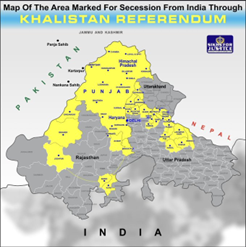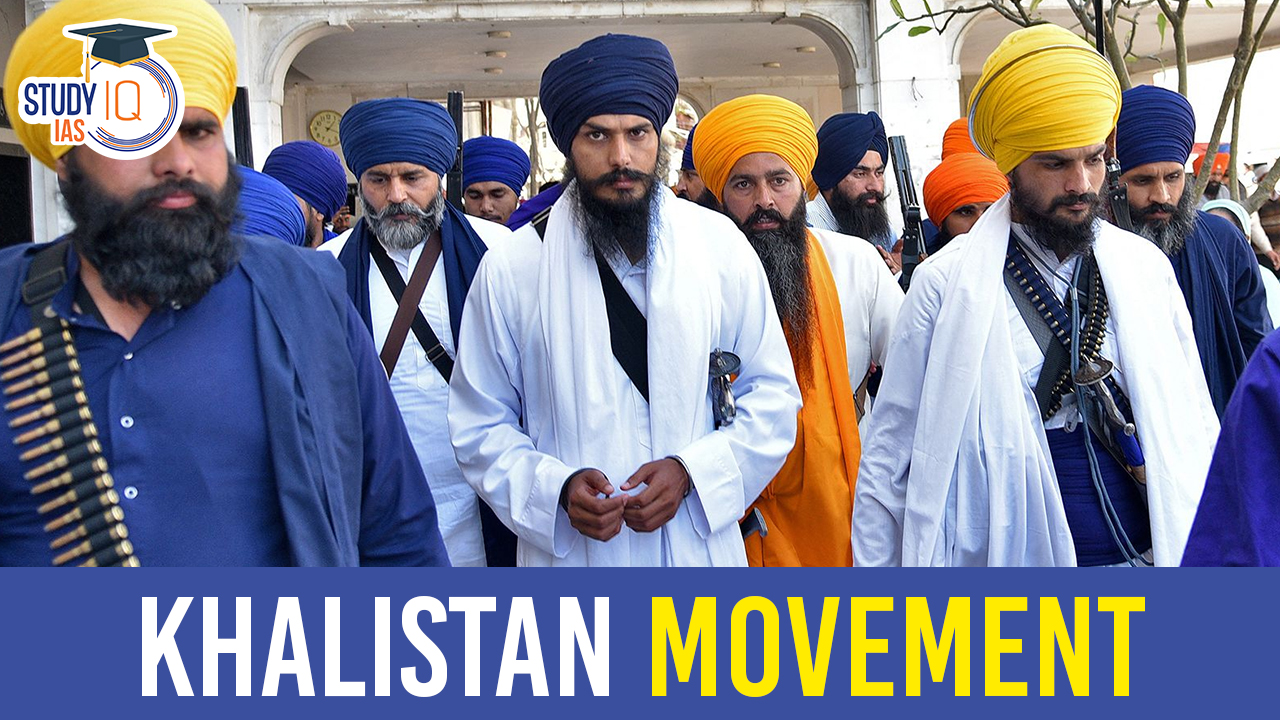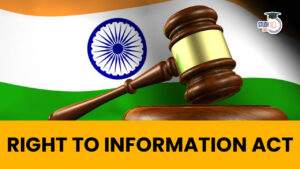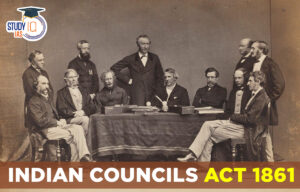Table of Contents
What is Khalistan Movement?
The Khalistan movement is a Sikh separatist movement seeking to create a homeland for Sikhs by establishing a sovereign state, called Khalistan in the Punjab Region. The geographical area of the proposed state involves land that currently forms Indian Punjab, Chandigarh and some parts of the neighbouring Indian states, most particularly bordering Punjabi-speaking areas of Himachal Pradesh, Haryana and Rajasthan.
Over the years, the movement has survived in various forms, in various places and amongst different populations. The movement was crushed in India following Operation Blue Star (1984) and Operation Black Thunder (1986 and 1988), but it continues to evoke sympathy and support among sections of the Sikh population, especially in the Sikh diaspora in countries such as Canada, the UK, and Australia.

Khalistan Movement Major Highlights and Latest Updates
Death of Khalistan Tiger Force (KTF) Chief
Hardeep Singh Nijjar, wanted by the Indian government, was killed in a targeted shooting in June this year. In 2022, the National Investigation Agency (NIA) announced a reward of Rs 10,000 for Nijjar. This was after he was accused of plotting to kill a Hindu priest in Punjab’s Jalandhar. Nijjar was shot at a gurdwara in Surrey. The issue was raised on the sidelines of the G20 summit.
On the sidelines of the G20 summit in Delhi, the Canadian Prime Minister and the Prime Minister of India discussed Khalistan extremism. The Canadian prime minister also raised the question of foreign involvement in the murder and asked India to cooperate in the investigation.
On the other hand, during the meeting, the Prime Minister of India expressed deep concern to the Canadian Prime Minister about the continued anti-Indian activities of extremist groups in Canada.
Recent Anti-Indian Actions in Canada
A Canadian social media video that showed the death of Prime Minister Indira Gandhi, who vanished from the procession, caused a tremendous uproar in June 2023. Outside, a woman in a white saree covered in blood stood with her hands raised as guys wearing turbans pointed firearms at her. The former prime minister Indira Gandhi’s assassination was commemorated by the march. The march was purportedly planned by supporters of Khalistan a few days before the 39th anniversary of “Operation Blue Star.”(celebrated on June 6).
Check here for India-Canada Diplomatic Relations in detail.
India Gives List of 20 Khalistan Ultras to Canada
While India has asked Canada to reduce its staff strength, and the details are still being worked out, whether the government formally downgrades diplomatic ties will likely depend on how Canada reacts to the move. MEA spokesperson Arindam Bagchi said India was ready to look into any specific piece of evidence or information from Canada but so far nothing had been shared. India also called upon Canada to act on a list of more than 20 Khalistan terrorists it has shared with Canadian authorities several times in the past.
India claimed that Canada’s accusations are untrue and predicated on unproven assumptions. At several diplomatic and security meetings, Indian officials have brought up the problem of deporting wanted terrorists. Here’s a list of Khalistan elements taking shelter in Canada:
- Arshdeep Singh Dala of Khalistan Tiger Force. Stays in Surrey, British Columbia, Canada.
- Satinderjit Singh Brar aka Goldy Brar. Stays in Canada with a valid Indian passport till 2026.
- Snover Dhillion. Stays in Ontario.
- Ramandeep Singh aka Raman Judge. Stays in BC, Canada.
- Gurjit Singh Cheema of Khalistan Liberation Front. Stays in Toronto.
- Gurjinder Singh Pannu. Stays in Toronto.
- 7) Gurpreet Singh of KLF. Stays in Surrey, Canada.
- 8) Tehal Singh of ISYF. Stays in Toronto.
- 9) Malkeet Singh Fauji of ISYF. Stays in Surrey. Canada.
- Manvir Singh Duhra of ISYF. Stays in BC, Canada
- Parvkar Singh Dulai aka Pary Dulai of ISYF. Stays in Surrey, Canada.
- Moninder Singh Bijal of KTF. Stays in Vancouver, Canada.
- Bhagat Singh Brar akak Bhaggu Brar of ISYF. Stays in Toronto.
- Satinder Pal Singhh Gill of ISYF. Stays in Vancouver, Canada.
- Sulinder Singh Virk. Stays in Brampton , Canada.
- Manveer Singh of KLF. Stays in Toronto, Canada.
- Lakhbir Singh aka Landa. Stays in Canada.
- Sukhdul Singh aka Sukh Duneke. Stays in Ontario.
- Harpreet Singh. Stays in Brampton, Canada.
- Sundeep Singh aka Suny aka Tiger. Stays in BC, Canada.
- Mandeep Singh Dhaliwal of KTF. Stays in Surrey, Canada.
Khalistan Movement and Canada
According to the Canadian census of 2021, Sikhs make up 2.1% of the population and are the fastest-growing religious minority in the nation. Canada has the largest Sikh population in the world after India. A depiction depicting Indira’s murder graced the cover of Toronto-based Punjabi-language weekly Sanjh Savera’s issue on the anniversary of her passing in 2002.
The newspaper was given government support and is now a well-known daily in Canada. The largest Sikh population in Canada is located in Brampton, where Sikhs for Justice (SFJ) organised a fictitious Khalistan referendum last year.
Khalistani Leaders Movement in Canada at Present
Relations between India and Canada strained due to the latter’s alleged leniency toward supporters of Khalistan, hit a new low. Canadian Prime Minister Justin Trudeau claimed there was evidence to suggest India’s involvement in the killing of Hardeep Singh Nijjar, designated as a terrorist by India, in Surrey.
This isn’t the first time these tensions have flared up. In 1998, Ottawa recalled its high commissioner to India following nuclear tests. The rift between the two nations became apparent as early as 1948 when Canada supported a plebiscite in Kashmir.
Khalistani Movement Causes
- The origins lie in the independence of India and subsequent religious boundaries
- The province of Punjab, divided between India and Pakistan, has experienced some of the worst communal violence and brought in millions of refugees.
- Lahore, the capital of the great Sikh empire of Maharaja Ranjit Singh, went to Pakistan along with Sikh shrines, including Nankana Sahib, the birthplace of Sikh founder Guru Nanak.
- Although the majority of Sikhs arrived in India, they formed a small minority in the country, about 2 per cent of the population.
Historical Events Responsible for Khalistan Movement
| Before Independence | |
| The Singh Sabha Movement: | It was founded at Amritsar in 1873 with a two-fold objective, to make available modern Western education to the Sikhs, and to counter the proselytizing activities of Christian missionaries as well as the Brahmo Samajists, Arya Samajists, and Muslim maulvis. |
| The Akali movement (also known as the Gurudwara Reform Movement) | This was an offshoot of the Singh Sabha Movement. It aimed at liberating the Sikh gurudwaras from the control of corrupt Udasi mahants. These two movements have raised Sikh nationalism. |
| After Independence | |
| 1947 Partition of India | Partition left Sikhs in a lot of discontentment with regard to their traditional lands being lost to Pakistan and also a mass exodus of immigrants from Pakistan. |
| Punjabi Suba movement | It was initiated in 1955 under Akali Dal, a Sikh-dominated political party. It sought re-organization of Punjab along linguist lines, seeking division of the state into Punjabi and non-Punjabi speaking areas. After a series of violent protests movement resulted in the trifurcation of Punjab into Punjab, Haryana, and Himachal Pradesh. |
| Anandpur Sahib Resolution | It reignited the passion of Sikhs and sowed the seeds of the Khalistan movement. The resolution demanded autonomy for the state of Punjab. All the above events have strengthened the claim of Khalistan. |
Intensification of Khalistan Movement
Although the above events have sown the seeds of Khalistan, the Khalistan movement was intensified by the following events:
Jarnail Singh Bhindranwale
He travelled across Punjab advocating a return to the Khalsa or a more orthodox form of Sikhism. He was inspired by the Khalistan ideology & led the Khalistan as an extremist movement (through violent protests and killings of high-profile persons in the Indian government) and turned against the Indian government.
Operation Blue Star (1984)
It was conducted to capture Bhindrawale in Golden Temple Complex, but the operation resulted in a strong anti-India sentiment.
The assassination of Indira Gandhi
The then PM Indira Gandhi was assassinated by her Sikh guards in 1984. Her killing was followed by widespread riots against the Sikhs in Delhi & other parts, the genocide of Sikhs across India fuelled more anti-India sentiment.
Radicalization of youth
Manifold extremist groups like the Khalistan Liberation Force, Khalistan Commando Force, Babbar Khalsa, and others gained prominence and roamed around freely across Punjab. Which led to more polarization and radicalization of youth by these groups.
Role of Pakistan
Pakistan’s ISI tried to foment the violence by providing support to extremist groups.
Referendum 2020
Sikhs for Justice (SFJ) in its London Declaration has announced to hold the first-ever non-binding referendum among the global Sikh community with the goal of re-establishing Punjab as a nation-state.


 Right To Information Act, Objective, Fea...
Right To Information Act, Objective, Fea...
 Indian Councils Act 1861, History, Provi...
Indian Councils Act 1861, History, Provi...
 NCERT Books for UPSC Preparation, Check ...
NCERT Books for UPSC Preparation, Check ...





















